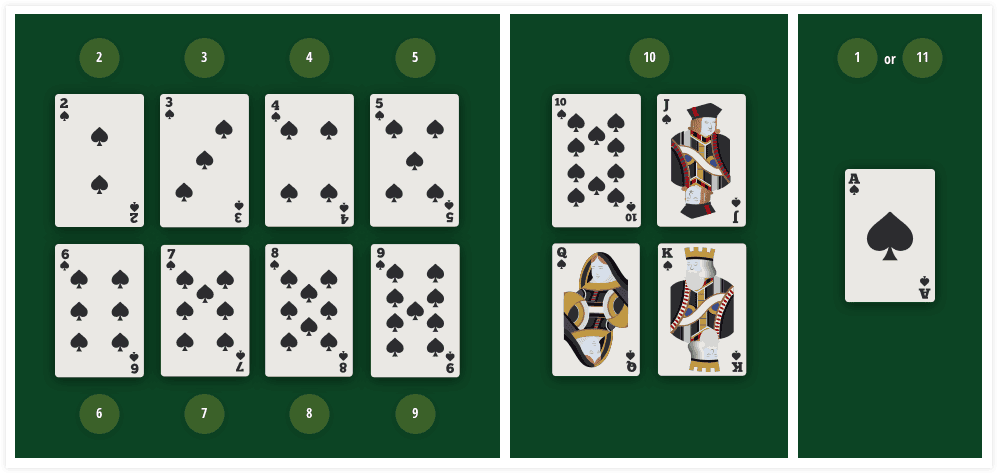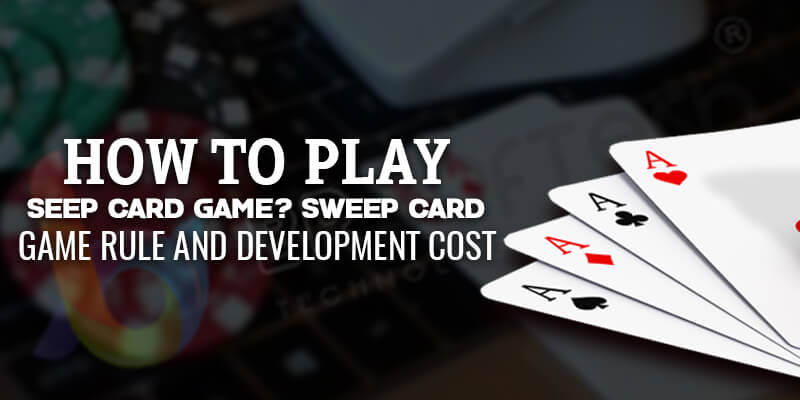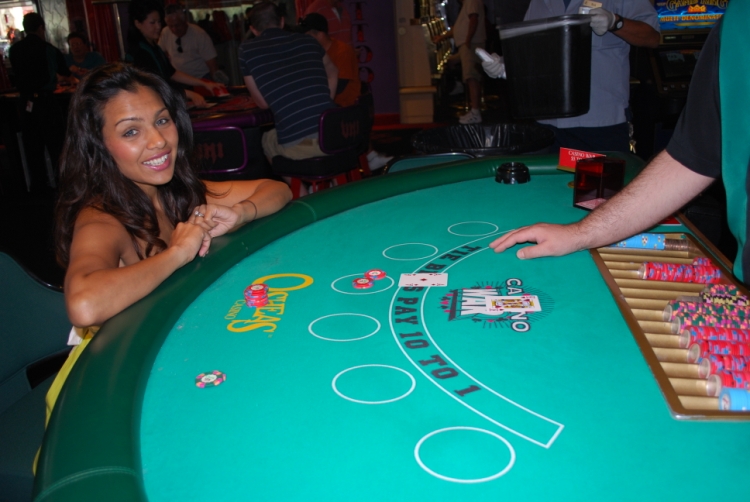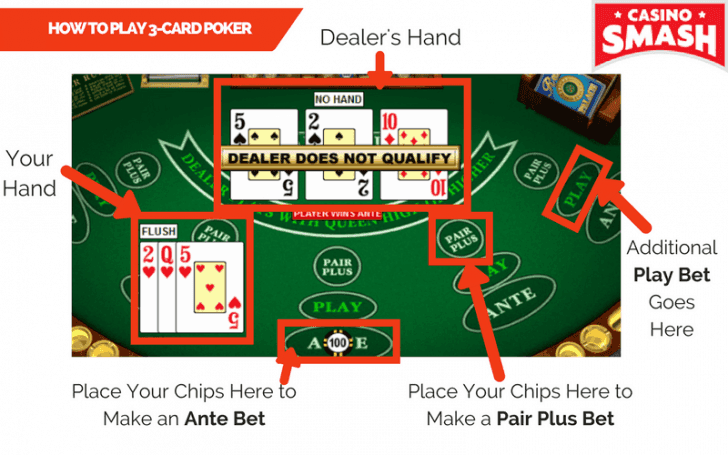Casino Card Game Rules
- Casino Card Game Rules Wiki
- Gambling Card Game Rules
- Casino Rummy Card Game Rules
- Rules Of Casino
- Casino Card Game Instructions And Rules
This intriguing game combines elements from the ancient Chinese game of Pai Gow and the American game of poker. The object of Pai Gow is to make the two best poker hands. Players use a traditional deck of 52 playing cards plus one joker. The joker must be used as an ace or a wild card to complete a straight or a flush.
As far back as 1797, Casino was described in books on card games. Though the game has quite a few details, it's easy to learn and fun to play, with lots of suspense and surprise. Here's how to play:
Number of players: Two
Advertisement
Advertisement
Object: To score points by taking cards.
The cards: Standard 52-card deck
Playing: Deal four cards to each player and four cards faceup on the table. Dealer keeps the rest of the pack handy. Nondealer plays a card first; players then alternate until the round is over. You can combine the card you play with cards on the table in many possible ways.
- This is a free authentic casino Blackjack gambling game, also known as twenty-one or 21, that you can play against the dealer. Enjoy classic casino card game with Popular Las Vegas rules just like at the real casino.
- Cassino (US) or Casino (Europe), is a fishing card game, often said without substantiation to be of Italian origin, for two, three, four (possibly in two partnerships), or even theoretically five players. It is the only fishing game to have penetrated the English-speaking world.
Matching: If your card matches by rank a card on the table, you can take the pair immediately. Place the two cards facedown in front of you on the table. Face cards can be taken only with other face cards and only in pairs -- if two queens are on the table and you hold another queen, you can take only one of the queens. However, if three matching face cards are on the table and you hold the fourth, you can take all four.
Combining: If your card equals the combined sum of two or more cards on the table, you can take those cards immediately.
Building: If at least one free card on the table, plus the card you play, totals the number of a card in your hand, announce this build number and pile up the build to take later. For example, if there is a 6 on the table and you have a 3 and a 9 in your hand, you could play the 3 onto the 6 and say 'Building 9s.' On your next turn, if your opponent hasn't taken it, you can take the build with your 9.
Your opponent can change the value of a build by playing another card. In this case, opponent can play an ace on the build and say 'Building 10s.' This tells you he or she has a 10 with which to take the build.
But if your 9 build is still there and if you have two 9s in your hand, on your next turn you can put one of them on top of the build and say, 'Still building 9s,' intending to take the build with your remaining 9. This creates a double build. Players can't change the value of a double build.
Once you have made a build, on your next turn you must take the build, add to the build, or make a new build. Leaving a build untaken runs the risk that opponent will take it, but you may leave a build behind as long as you can add cards to it or make another play. Nothing prevents you from taking opponent's build; you can do so if you have the right card. On the other hand, nothing prevents your opponent from taking your build!
Trailing: You may also play a card by trailing it -- placing it on the table without building it onto another card. You can't do this if you have made a build that's still on the table. You must trail a card if you can't do anything else on your turn. For strategic reasons, a player might want to trail a card onto the table even though it matches the rank of one already there.
After the first round of four cards, dealer deals another round of four cards each and nondealer again plays first. Continue dealing four-card rounds until the pack is depleted, with dealer announcing 'last' on the last round. Whoever makes the last take of the last round gets any cards left on the table.
Play to 21 points or to any other agreed-upon number.
Tips: Keeping track of what's been played -- particularly the spades and points you've taken in -- is critical in Casino.
Until it's been played, a certain amount of tension revolves around the 10, Big Casino. As nondealer, if you have the 10, you risk losing it if you can't take it in. (Dealer will probably save any 10 as the final card of the round.) Beware of building 10s when your own 10 is not the 10.
Casino Card Game Rules Wiki
If you are dealt any of the four aces or the 2, your best chance of taking them in is through building. Test your opponent's hand with a double build. Suppose you're holding an Ace, a 3, and a 6, and on the table are a 3 and a 5. You'd really like to take the Ace for the point. First you play the 3 on the 3, saying 'Building 6s.' If opponent doesn't take it, on your next play you place you Ace on the 5 to make a double build of 6s -- subsequently picking up the lot with your 6.
You can often rack up more points by concentrating on winning cards and spades rather than on the Big Casino and Little Casino.

As dealer, if you are dealt a face card on the last round, you are virtually guaranteed to get last card, since you play last.
Advertisement
OBJECTIVE OF CASINO: Accumulate points by capturing cards.
NUMBER OF PLAYERS: 2-4 Players, in 4 player games there is an option to partner up (2 vs 2)
NUMBER OF CARDS: Standard 52 card deck
RANK OF CARDS: K, Q, J, 10, 9, 8, 7, 6, 5, 4, 3, 2, A
TYPE OF GAME: Fishing game
AUDIENCE: Adults
THE DEAL CASINO
Each player is dealt four cards from the dealer with four cards face-up in the center. The deal is traditionally done two at a time, two cards to each player, two cards to the table, and two cards to the dealer. Remaining cards are set aside. After each player has played their four cards they are dealt four more from the remaining cards pile. After the first deal, no more cards are dealt to the table. This continues until all 52 cards have been played. When dealing the last hand the dealer must announce “last.” After the last hand has been played and scored the position as dealer passes to the left.

THE PLAY
The player to the left of the dealer begins and play moves clockwise. On their turn, each player must play one card from their hand by placing it face-up on the table. This card can be used to capture 1+ cards from the table. Even if there is or is not a capture, play passes on.
- in the event of a capture, after other players have seen the capturing card, the player collects the captured card with the capturing card and places them in a pile face-down.
- If there is no capture the card remains face-up on the table.
Possible types of play:
- Capture with a face card, if you play a face card (King, Queen, Jack) that is the same rank as one on the table, you may capture a face card on the table. If there are multiple matching cards on the table you may only capture one.
- Capture with a number card, if you play a numerical card (A and 2-10) you may capture any number cards of equal face value. You can also capture any sets of cards whose sum totals the value of the card played, under these restrictions:
- cards within a build (see below) can only be captured by a card whose value is equal to the value claimed for that build.
- if you capture a set, each individual card may only be counted as being within that set.
Example: A 6 is played, you can capture one, two, or three 6s. You can also capture two 3s and three 2s.

- Form a Build/Building, number cards can be combined with other cards on the table if placed together. This is forming a build. They are made of a collection of number cards which are captured by a single number card according to the previous rule. Whoever is making the build must announce to the other players the value of the capturing card. For example, “building six.” Players must have the number card which can be used later to make the capture. There are two kinds of builds:
- Single builds have 2+ cards whose face value add up to the value of the build.
- Multiple builds have 2+ cards or sets, each set must equal the value of the build. For example, an 8 build may bee constructed with an eight, an Ace and a seven, 2 fours, or a five and a three. If a player holds an eight and there is a three and a five on the table, these cards may be combined to form a multiple build.
Builds must include the card you just played and may not consist only of cards on the table. Builds can only be captured as an entire unit and never cards individually.
- Capture a Build with a number cards whose value equals the capture card of the build. If during your turn there is a build which you have made and/or added to, which no other player has added to since your last turn, you may not simply trail (see below) a card. You must either: capture a card, create a new build, or add to an existing build. Whatever you choose to play, you may not capture or add to builds if it will leave you without the card which is equal to the build. If you decide to capture a build you also have the opportunity to capture single number cards on the table which equal or add up to the value of the build.
- Add to a Build in one of two ways:
- Use a card from your hand to add to a single build. This increases the value of the capture for that build, provided, of course, you also hold the card in your hand which is equal to the new capturing value. You can also add cards from the table to this build if they are legal. Cards from the table, however, cannot change the value of the build. Capturing numbers of multiple builds cannot be changed. See the example below.
- If a player holds a card which could capture a build, single or multiple, they may add cards from their hand or a combination of a card from their hand and cards on the table, as long as they are not already in the build.
Example: There is a building on the table with a two and a three, announced as “building 5.” If you have a three and an eight in your hand you may add the three to that building and announce, “building 8.” Another player may have an Ace and a nine, they can then add the ace to the building and announce, “building 9.”
When adding to a build you must use one card from your hand.
- Trailing a card is an option if you do not wish to build or capture. The single card is put face-up beside the layout to be played upon later in the game. Play moves on. You may trail a card even if that card could have made a capture.
SCORING
Scores are tallied from the pile of cards each player or team has won.
Gambling Card Game Rules
- Most cards = 3 points
- Most spades = 1 point
- Ace = 1 point
- 10 of Diamonds (also called The Good Ten or Big Casino)= 2 points
- 2 of Spades (also called The Good Two or Little Casino) = 1 point
In the event of a tie for either most cards or spades, neither player earns those points. The first player to reach 21+ points is the winner. If there is a tie you must play another round.
VARIATION
Royal Casino
Regular Casino rules apply but face cards have extra numerical values: Jacks = 11, Queens = 12, and Kings = 13. An ace = 1 or 14.
It is tempting in Royal Casino to hold the aces for longer so that you may make a 14 build.
Royal Casino is also played with the variant sweeps. This happens when one player takes all the cards from the table and the next player must trail. If a sweep is made, the capture card is put face-up on the pile of cards they have won. Each sweep is worth 1 point.
Scoring in Royal Casino follows this order:
- Player with the most cards
- Player with the most spades
- Big Casino
- Little Casino
- Aces in this order: Spades, Clubs, Hearts, Diamonds
- Sweeps

REFERENCES:
https://www.pagat.com/fishing/casino.html
http://www.grandparents.com/grandkids/activities-games-and-crafts/casino
Casino Rummy Card Game Rules
https://www.pagat.com/fishing/royal_casino.html
RESOURCES:
Rules Of Casino

Casino Card Game Instructions And Rules
Find more casino games at https://www.new-onlinecasinos.co.uk/casino-games/.